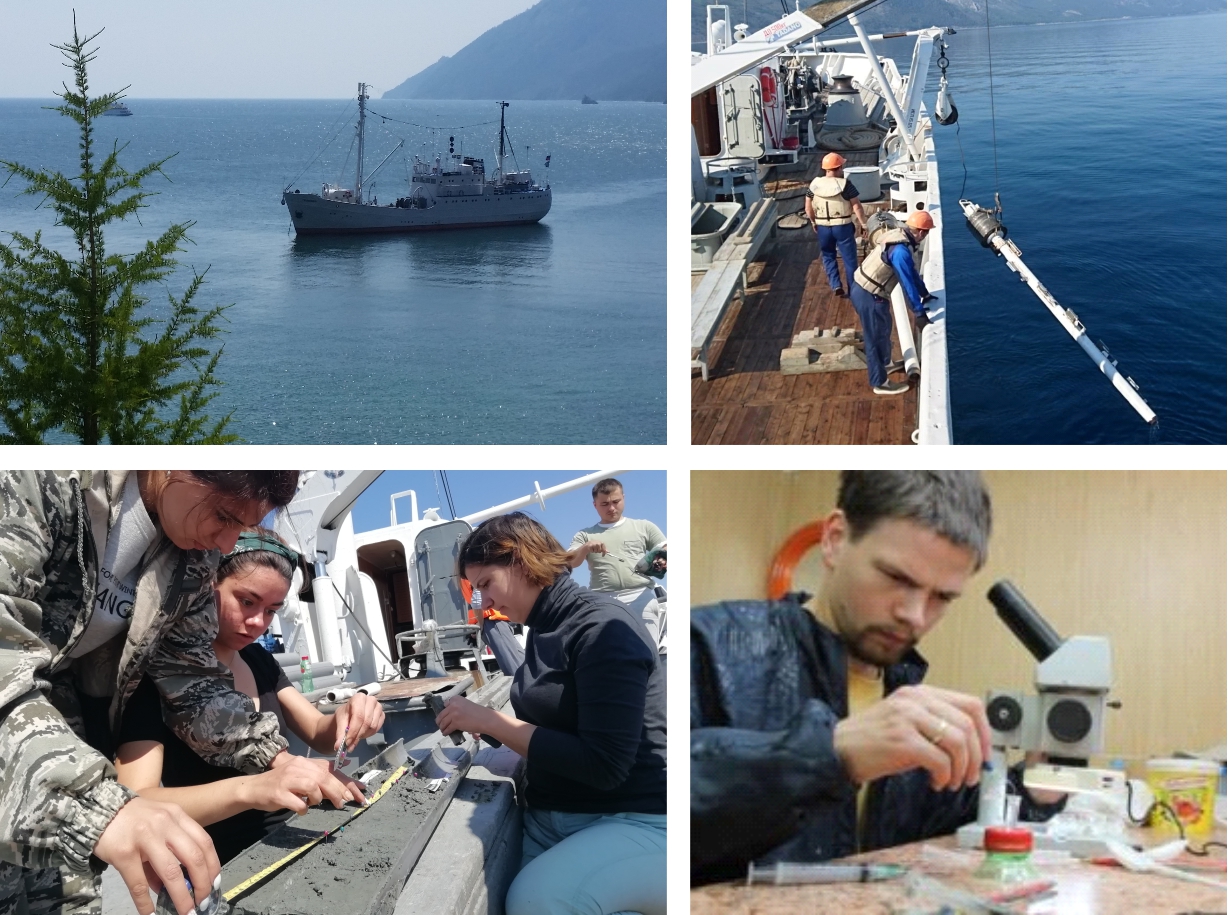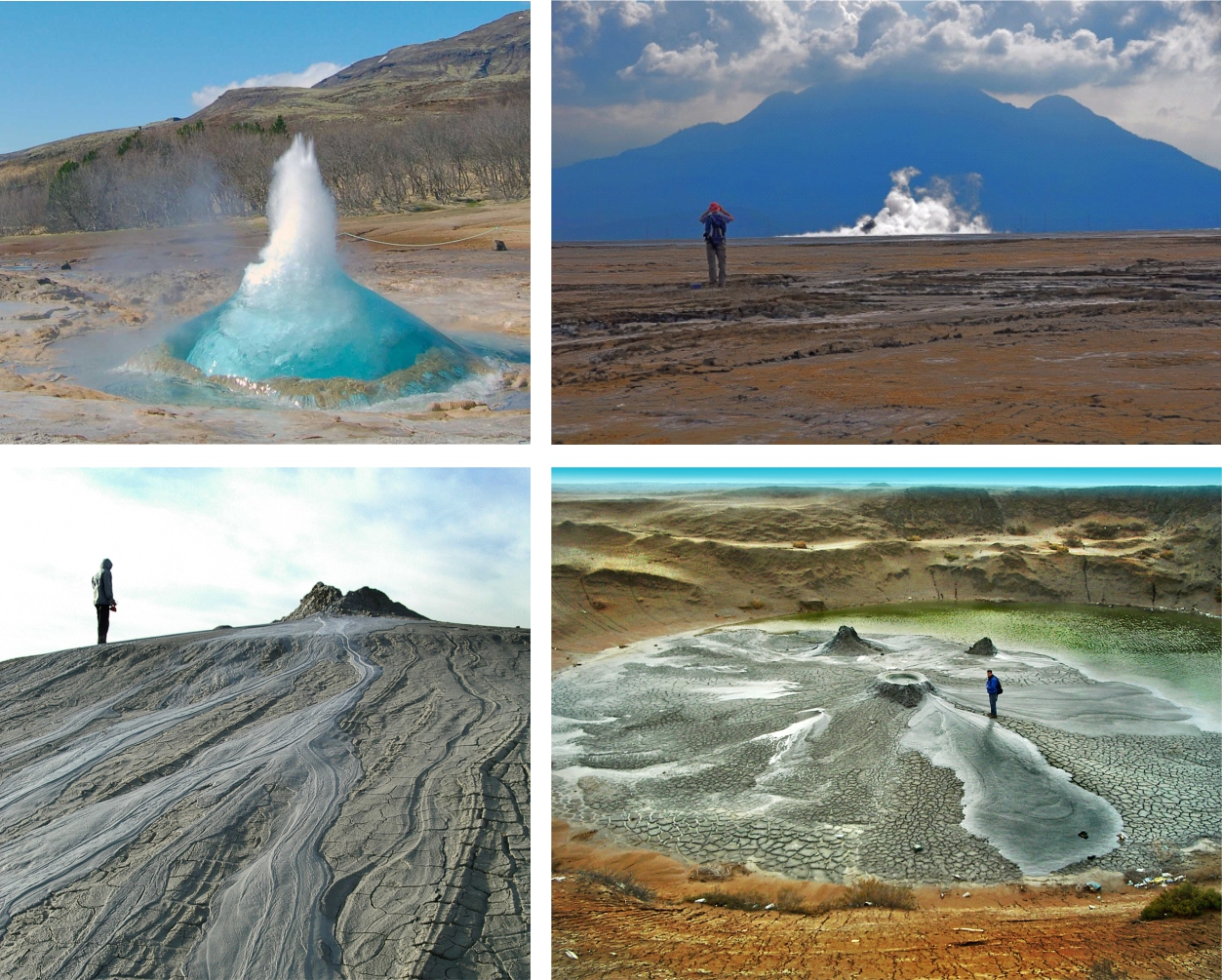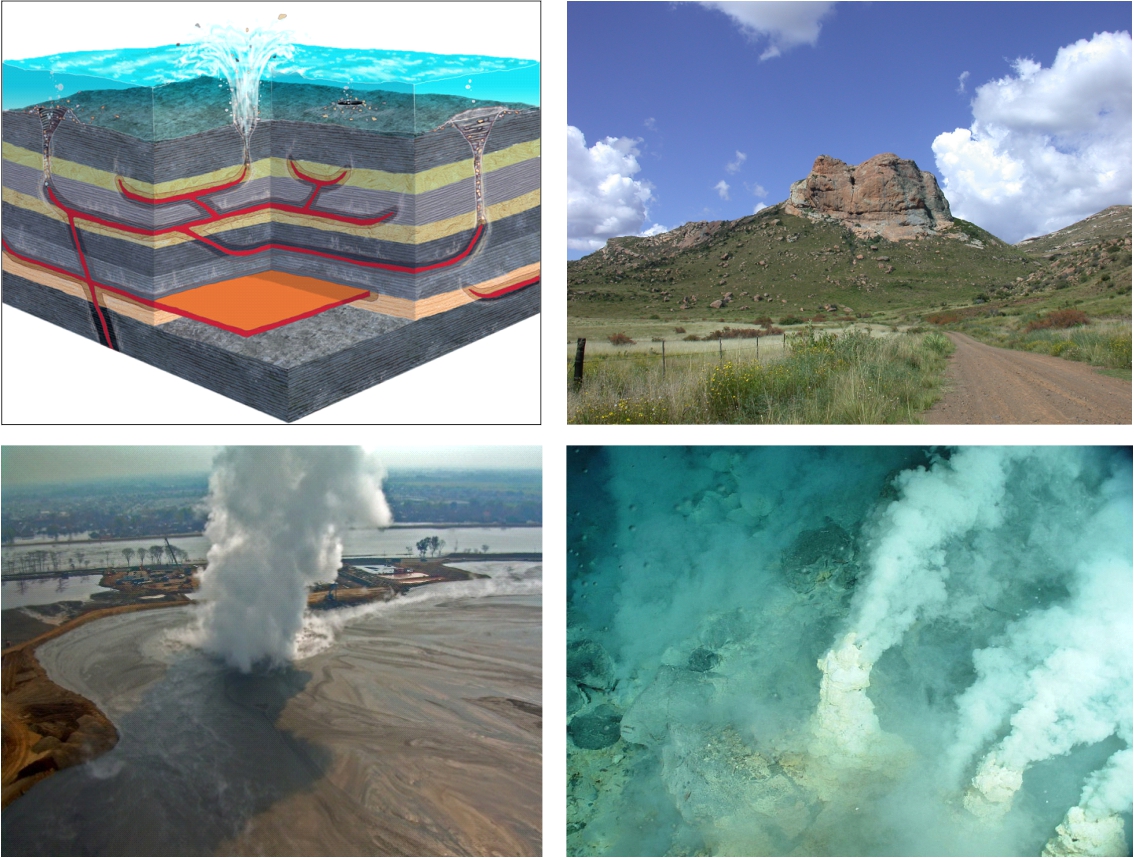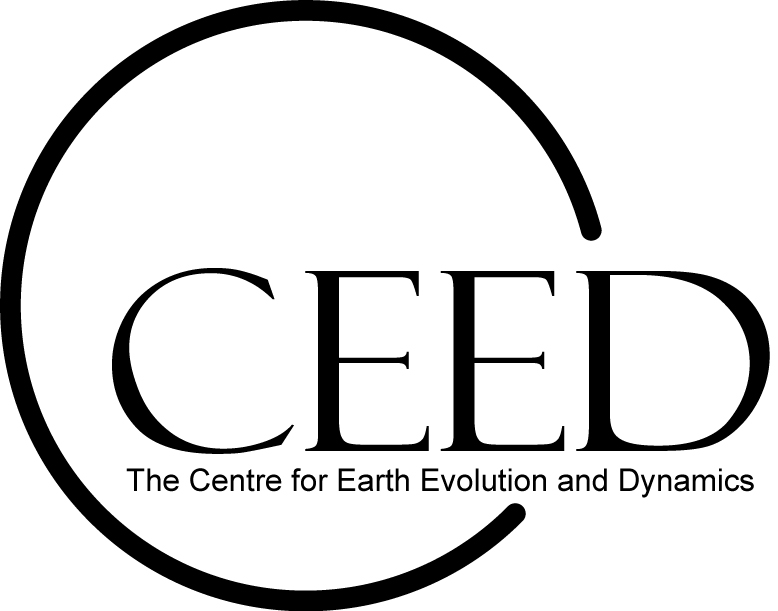Piercement structures in the Earth crust
CEED and the Department of Geosciences at the University of Oslo have been pioneering the studies of piercements triggered by the emplacement of magma in sedimentary basins or by the generation of hydrocarbons in organic-rich basins. These geological structures represent one of the most intriguing phenomena of the Earth's crust, not least for its implications in energy resource exploration, seismicity, geohazard and atmospheric budget of greenhouse gases released at present and during the global climate crises characterizing our planet’s history. The research community investigating piercements includes research domains that often do not interact.
HOTMUD proposes to set the bases for a multidisciplinary platform for research and education with some of the best Institutes including Norway (CEED-UIO and CAGE-UIT), Russia (Moscow State University and Irkutsk National Research Technical University), USA (University of California, Berkeley), Japan (Kitami Institute of Technology) that conduct similar, but also complimentary activities on this topic.
HOTMUD conducts multidisciplinary research to unravel the mechanisms that create so-called piercement structures in sedimentary basins and aims to quantify their role and importance in atmosphere global carbon emissions. Our international collaboration will promote research at dedicated onshore and offshore world-class localities in combination with student training and education.

Piercement structures are characterized by forming vertical conduits that connect deep geological formations with the surface and ultimately the atmosphere. Piercement structures are geologically and climatically important, but their formation mechanisms are still debated and poorly understood. Such piercement structures include e.g. mud volcanoes and hydrothermal vent complexes.
Our international collaboration will promote research at dedicated onshore and offshore world-class localities in combination with student training and education. Students will be exposed to an international synergic environment of multiple disciplines some of which are currently not available at the University of Oslo.

The HOTMUD project offers students and staff possibilities to attend workshops, field trips, lab training and intensive courses.
Cooperation and activities |
|
|---|---|
HOTMUD at a glance:
- Primary Objective: Strengthen and broaden a multidisciplinary cooperation between world-leading institutes to conduct research and education programs to unravel the mechanisms that create piercement structures, their eruption dynamics, and their impact for atmosphere geological carbon emissions. The ultimate goal is to foster a new generation of Norwegian and international geoscientists with theoretical and practical training on this topic of planetary relevance.
- Secondary objectives:
1. Design with partners and networked institutes the first ever international PhD course entirely dedicated on piercements
2. Establish a summer school in Azerbaijan with theoretical and field lectures on the best mud volcano region on Earth
3. Create an international "Floating University" programme for offshore research and training
4. Promote students exchange and joint supervision with field campaigns at selected sites
5. Share laboratory and technology facilities among the partners to complete multidisciplinary studies




